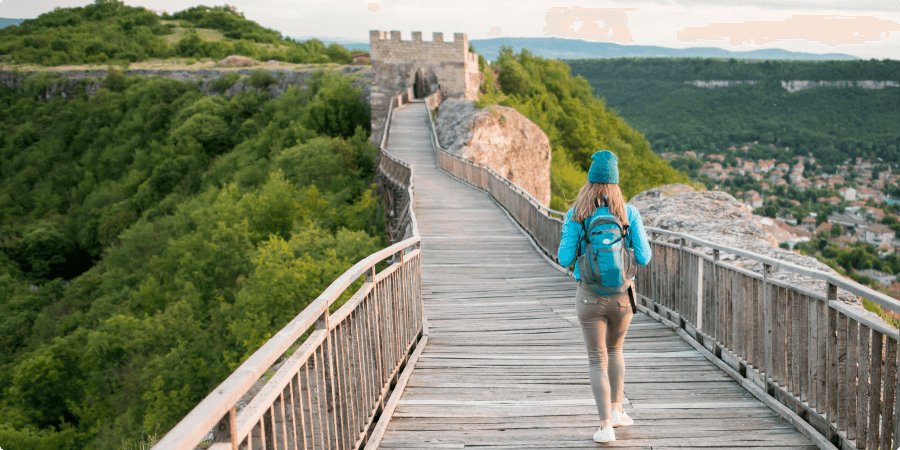Welcome to the enchanting region of Cappadocia, where time stands still, and history comes alive. Nestled in the heart of Turkey, this awe-inspiring destination is home to a wealth of ancient wonders, waiting to be explored. From the mesmerizing rock-cut churches of Byzantine times to the mysterious underground cities, Cappadocia offers a unique glimpse into the secrets of the past. Join us on a journey as we unravel the mysteries of Derinkuyu Underground City, discover the captivating cave art of Goreme Open-Air Museum, and marvel at the iconic fortress of Uchisar Castle. Let’s embark on an adventure into the surreal landscapes and rich history of Cappadocia.
Ancient Rock-Cut Churches: A Glimpse Into Byzantine History
When it comes to historical sites, Cappadocia is a treasure trove that offers a fascinating journey into the Byzantine era. One of the most awe-inspiring attractions in this region is the ancient rock-cut churches. Carved into the soft volcanic rock, these churches provide a glimpse into the rich religious and cultural heritage of the Byzantine Empire.
The rock-cut churches in Cappadocia are a testament to the artistic and architectural genius of the Byzantine era. The intricate carvings on the walls and ceilings, the frescoes depicting biblical scenes, and the unique rock formations make these churches truly remarkable. Each church has its own story to tell, and exploring them is like stepping back in time.
One of the must-visit rock-cut churches in Cappadocia is the Göreme Open-Air Museum. This UNESCO World Heritage Site is home to numerous churches, chapels, and monasteries, all carved into the rock. The Dark Church, also known as the Church of St. Barbara, is particularly famous for its well-preserved frescoes that date back to the 11th century.
- The Dark Church: Marvel at the vibrant frescoes that adorn the walls of this hidden gem.
- The Apple Church: Admire the unique apple-shaped dome and the beautiful frescoes inside.
- The Buckle Church: Discover the intricate rock-carved designs and the fascinating history behind this church.
Another remarkable rock-cut church worth visiting is the Karanlık Kilise (Dark Church) in the Göreme Open-Air Museum. As its name suggests, the interior of this church is hidden in darkness, allowing the frescoes to be exceptionally well-preserved. The colorful biblical scenes and intricate detailing on the walls will leave you in awe.
Cappadocia’s ancient rock-cut churches are not just religious sites; they also offer a unique insight into Byzantine history and culture. These churches were not only places of worship but also served as centers for education and enlightenment. The frescoes within the churches depict biblical stories and provide a visual representation of the religious teachings of the time.
| Church | Location |
|---|---|
| The Dark Church | Göreme Open-Air Museum |
| The Apple Church | Göreme Open-Air Museum |
| The Buckle Church | Göreme Open-Air Museum |
| The Karanlık Kilise | Göreme Open-Air Museum |
Visiting these ancient rock-cut churches in Cappadocia is like stepping into a time machine. You can immerse yourself in the rich history, admire the remarkable craftsmanship, and witness the stories depicted on the walls come to life. It’s an experience that will leave you in awe and make you appreciate the incredible legacy of the Byzantine Empire.
Derinkuyu Underground City: Unraveling The Secrets Of The Past
The Derinkuyu Underground City is a fascinating historical site located in Cappadocia, Turkey. It is one of the many underground cities that can be found in this region, and it offers a unique glimpse into the past. This underground complex is believed to have been built and used by the early Christians as a shelter from persecution during the Byzantine era. It is truly a marvel of engineering and provides valuable insights into the history and culture of the people who lived here centuries ago.
The Derinkuyu Underground City is an intricate maze of tunnels, rooms, and chambers that span several levels underground. It is estimated to have the capacity to accommodate around 20,000 people, making it one of the largest underground cities in the region. Its construction is incredibly impressive, considering the limited tools and technology available at the time. The city features ventilation shafts, wells, and even a complex network of communication tunnels that connected different parts of the underground city.
Exploring the Derinkuyu Underground City is like stepping back in time. As you walk through the narrow passageways and cramped rooms, you can’t help but wonder about the daily life of the people who once called this underground city their home. The city has various sections, including living quarters, stables, religious spaces, storage areas, and even a school. It is believed to have had all the necessary amenities to sustain a community, including food storage facilities and a water supply system.
| Features of Derinkuyu Underground City: | Highlights: |
|---|---|
| 1. Tunnels, rooms, and chambers | 1. Impressive engineering |
| 2. Ventilation shafts and wells | 2. Capacity to accommodate 20,000 people |
| 3. Communication tunnels | 3. Comprehensive defense system |
| 4. Living quarters, stables, and religious spaces | 4. Insights into daily life of past inhabitants |
| 5. Food storage facilities and water supply system | 5. A safe haven in times of danger |
Visiting the Derinkuyu Underground City is an incredible experience for history enthusiasts and curious travelers alike. It provides a unique opportunity to learn about the rich history of Cappadocia and the resilience of its people. As you unravel the secrets of the past within the underground labyrinth, you’ll gain a deeper appreciation for the ingenuity and resourcefulness of those who came before us. Don’t miss out on this remarkable historical site when you visit Cappadocia!
Goreme Open-Air Museum: Discovering Unique Cave Art
The Goreme Open-Air Museum is a must-visit historical site in Cappadocia, Turkey. Located in the picturesque town of Goreme, this museum offers a fascinating glimpse into the region’s rich history and unique cave art. Dating back to the 10th century, the museum is a UNESCO World Heritage Site and showcases an impressive collection of rock-cut churches and frescoes.
One of the highlights of the Goreme Open-Air Museum is the rock-cut churches. These ancient churches were carved into the soft volcanic rock by early Christians who sought refuge in Cappadocia. Inside the churches, visitors can admire breathtaking frescoes depicting biblical scenes and religious figures. The intricate details and vibrant colors of these frescoes are truly awe-inspiring.
Visitors to the museum can also explore the monastic complex, which consists of several interconnected chambers and rooms. These rooms were used by monks for meditation, worship, and everyday activities. Walking through these chambers gives visitors a sense of the monastic life in Cappadocia centuries ago.
- One of the most famous churches in the Goreme Open-Air Museum is the Apple Church, named after its apple-shaped rock dome. Inside the church, visitors can marvel at the stunning frescoes, including scenes from the life of Christ and the Last Judgment.
- The Dark Church is another highlight of the museum, although it requires an additional admission fee. This church is known for its well-preserved frescoes that depict various biblical scenes, including the Crucifixion and the Betrayal of Jesus.
In addition to the rock-cut churches, the museum also features a variety of other structures, including stables, storage rooms, and living quarters. These structures provide a glimpse into the daily lives of the people who once inhabited this region. Exploring these buildings is like stepping back in time and truly immersing oneself in the rich history of Cappadocia.
| Opening Hours | Admission Fee |
|---|---|
| April to October: 8:00 AM to 7:00 PM | 20 Turkish Lira |
| November to March: 8:30 AM to 5:30 PM | 10 Turkish Lira |
Overall, a visit to the Goreme Open-Air Museum is a truly unique experience. It allows visitors to see firsthand the remarkable cave art and rock-cut churches that are synonymous with the rich history of Cappadocia. Whether you’re a history enthusiast or simply appreciate beautiful artwork, this museum is definitely worth a visit.
Uchisar Castle: Marveling At Cappadocia’s Iconic Fortress
Cappadocia, located in central Turkey, is renowned for its unique and captivating historical sites. One such site that should be at the top of every traveler’s list is Uchisar Castle. This iconic fortress stands tall on a rocky outcrop, offering a mesmerizing panoramic view of the surrounding landscapes. Let’s delve into the intriguing history and architectural marvels of Uchisar Castle.
The Uchisar Castle, also known as Uchisar Citadel, is a natural wonder that has been transformed into a remarkable fortress. The fortress dates back to the Byzantine period, serving as a defensive stronghold against invading armies. Its strategic location, perched on top of a volcanic rock formation, provided an elevated vantage point to monitor and protect the surrounding area.
As you ascend to the top of Uchisar Castle, you’ll encounter a labyrinth of tunnels, rooms, and chambers carved into the rock. These intricate passageways were once used as storage rooms, houses, and even places of worship. Walking through the narrow corridors, you can’t help but feel a sense of awe and wonder at the craftsmanship of the people who built this fortress centuries ago.
| Uchisar Castle: Marveling At Cappadocia’s Iconic Fortress | |
|---|---|
| Location | Cappadocia, central Turkey |
| Historical Significance | Byzantine period fortress and defensive stronghold |
| Architecture | Rock-cut chambers, tunnels, and passages |
| View | Breathtaking panorama of Cappadocia’s landscapes |
If you’re planning a visit to Cappadocia, Uchisar Castle is a must-visit destination. The combination of its rich historical significance, stunning architecture, and awe-inspiring view make it a true gem in this captivating region. Whether you’re a history enthusiast, an architecture admirer, or simply someone seeking breathtaking vistas, Uchisar Castle promises an unforgettable experience.
Pasabag Valley: Exploring The Surreal Fairy Chimneys
Pasabag Valley, also known as the Monks Valley, is one of the must-visit historical sites in Cappadocia. Located in the central Anatolian region of Turkey, this unique valley offers visitors a glimpse into the surreal world of fairy chimneys. These peculiar rock formations are the result of volcanic activity that occurred millions of years ago. Over time, wind and water eroded the volcanic rock, giving birth to the fascinating shapes that resemble chimneys.
One of the highlights of exploring Pasabag Valley is the opportunity to see multiple fairy chimneys clustered together. These clusters create a magical and otherworldly atmosphere, making it a favorite spot for photographers and nature lovers. The fairy chimneys vary in size and shape, with some reaching impressive heights. It’s truly a sight to behold.
Aside from the peculiar rock formations, Pasabag Valley also holds historical significance. In ancient times, hermit monks used to live in these fairy chimneys, seeking solitude and practicing their spiritual rituals. The valley’s name, Monks Valley, is derived from this historical connection. Exploring the valley feels like stepping back in time, as you can still find traces of the hermit cells and religious artwork carved into the rocks.
| Highlight | Description |
|---|---|
| Fairy Chimneys | The main attraction of Pasabag Valley, these surreal rock formations are a testament to nature’s artistic abilities. |
| St. Simeon’s Chapel | Visit this beautifully preserved cave chapel adorned with ancient frescoes depicting biblical scenes. |
| Sunrise/Sunset View | Experience the enchanting beauty of Pasabag Valley at dawn or dusk, when the light paints the fairy chimneys with a golden hue. |
In conclusion, Pasabag Valley is a true gem in Cappadocia, offering visitors the chance to explore a surreal landscape dotted with fairy chimneys. Beyond their aesthetic appeal, these rock formations hold historical and cultural significance, making them a fascinating destination for history enthusiasts. Whether you’re a nature lover, a history buff, or a photography enthusiast, Pasabag Valley is a sight that should not be missed during your visit to Cappadocia.
Zelve Open-Air Museum: Tracing The Life Of A Ghost Town
The Zelve Open-Air Museum is a fascinating historical site located in Cappadocia, Turkey. It provides visitors with a unique opportunity to trace the life of a ghost town and delve into its rich history. This museum showcases the remnants of an ancient village that was inhabited from the 9th to the 20th century. The abandoned rock-cut houses, churches, and other structures offer a glimpse into the daily lives of the people who once called Zelve home.
One of the most remarkable features of the Zelve Open-Air Museum is its intricate cave dwellings. These rock-cut houses were carved directly into the soft volcanic tuff rock, creating a distinctive architectural style. Exploring the narrow passages and rooms of these dwellings allows visitors to imagine what life was like for the local inhabitants centuries ago. The museum also houses numerous churches, some of which still retain their original frescoes and intricate carvings, providing valuable insights into Byzantine religious art and culture.
For those interested in history and archaeology, a visit to the Zelve Open-Air Museum is a must. The site offers a captivating journey through time, allowing visitors to understand the evolution of this once-thriving community. Walking through the deserted streets and exploring the deserted houses creates a sense of walking through history itself. The museum’s exhibits provide detailed information about the daily life, social structure, and cultural practices of the people who once resided in Zelve.
| Opening Hours: | 9:00 AM – 7:00 PM |
|---|---|
| Admission Fee: | 15 Turkish Lira |
| Location: | Zelve, 50500 Avanos/Nevşehir, Turkey |
A visit to the Zelve Open-Air Museum is a unique and immersive way to explore Cappadocia’s fascinating history. It offers visitors the opportunity to walk through the remains of a ghost town and gain a deeper understanding of the daily lives of the people who once inhabited this extraordinary place. Whether you are interested in archaeology, history, or simply appreciate the beauty of ancient architecture, the Zelve Open-Air Museum is a must-visit destination in Cappadocia.
Kaymakli Underground City: Immersed In Ancient Underground Living
The Kaymakli Underground City is one of the most fascinating historical sites in Cappadocia. Located in the Nevşehir Province of central Turkey, this underground city offers a glimpse into ancient underground living.
Built during the Hittite period, Kaymakli Underground City consists of multiple levels of tunnels, rooms, and passages carved out of the soft volcanic rock. It is estimated that the city could accommodate around 3,500 people, providing them with shelter, storage areas, water wells, and even ventilation systems.
Exploring the Kaymakli Underground City is like stepping back in time. As you wander through the narrow pathways and visit different rooms, you can imagine what life was like for the ancient inhabitants of this remarkable underground complex. The clever architectural design of the city ensured the safety and survival of its residents during times of conflict and invasions.
Frequently Asked Questions
What is the significance of ancient rock-cut churches in Byzantine history?
Ancient rock-cut churches provide valuable insights into the religious and cultural practices of the Byzantine Empire. They served as places of worship, showcasing intricate frescoes and carvings that depict religious stories and symbols.
What secrets does the Derinkuyu Underground City hold?
The Derinkuyu Underground City is believed to have been used as a refuge and defensive shelter during times of war. Its tunnels and chambers provided protection for inhabitants and contained various amenities such as ventilation shafts, storage rooms, and even a church.
What can visitors discover at the Goreme Open-Air Museum?
The Goreme Open-Air Museum offers a unique experience of exploring cave art and rock-cut churches. Visitors can witness the extraordinary frescoes that depict biblical scenes, gaining a deeper understanding of the artistic and religious heritage of Cappadocia.
Why is Uchisar Castle considered an iconic fortress in Cappadocia?
Uchisar Castle stands as a magnificent natural rock formation that has been transformed into a fortress. Its strategic location allowed it to serve as a defensive stronghold for centuries, making it an important symbol of Cappadocia’s history and architecture.
What are fairy chimneys and why are they surreal in Pasabag Valley?
Fairy chimneys are tall, conical rock formations that arise from the erosion of volcanic ash and lava. In Pasabag Valley, these fairy chimneys create a surreal landscape with multiple mushroom-like formations, making it a unique and captivating destination.
What can visitors uncover about the abandoned ghost town at Zelve Open-Air Museum?
Zelve Open-Air Museum offers a glimpse into the life of a deserted ghost town. Visitors can explore the ancient cave dwellings, churches, and monasteries, witnessing the traces of past civilizations and the cultural heritage of Cappadocia.
What does the Kaymakli Underground City reveal about ancient underground living?
The Kaymakli Underground City showcases the remarkable architecture and engineering skills of the ancient inhabitants. It provides insights into their daily lives, with numerous levels, tunnels, and rooms that served as living quarters, storage areas, and even places of worship.









